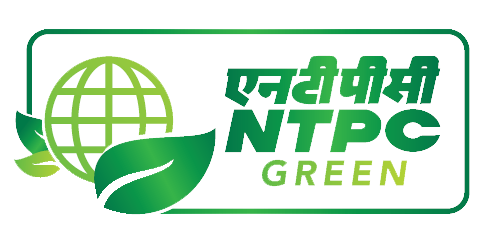Employee Blog

PUBLISHED ON:
Ritwik Ghosh
Manager (RE-Hydrogen)
NTPC-RE, Greater Noida
Collecting clean water from fog
Researchers have demonstrated the use of a specially coated metal mesh to harvest water from fog and simultaneously remove pollutants. People living in dry but foggy areas should benefit from this technology.
A mesh coated with titanium dioxide harvests and cleans water from fog. (Photograph: ETH Zurich / Adobe Stock / Montage)
Brief
- Researchers have for the first-time combined water harvesting from fog with a water treatment method powered exclusively by solar energy.
- A property known as photocatalytic memory ensures that this also functions when skies are overcast and at night.
- Using the new technology, drinking water can be harvested in areas with heavy atmospheric pollution.
In countries such as Peru, Bolivia and Chile, it's not uncommon for people who live in foggy areas to hang up nets to catch droplets of water. The same is true of Morocco and Oman. These droplets then trickle down the mesh and are collected to provide water for drinking, cooking and washing. As much as several hundred litres of water can be harvested daily using a fog net only a few square metres in area. For regions with little rain or spring water, but where fog is a common occurrence, this can be a blessing.
One crucial drawback with this method, however, is atmospheric pollution, since the hazardous substances also end up in the droplets of water. In many of the world's major cities, the air is so polluted that any water harvested from fog is't clean enough to be used untreated either for drinking or for cooking.
Researchers at ETH Zurich have now developed a method that collects water from fog and simultaneously purifies it. This uses a close-mesh lattice of metal wire coated with a mixture of specially selected polymers and titanium dioxide. The polymers ensure that droplets of water collect efficiently on the mesh and then trickle down as quickly as possible into a container before they can be blown off by the wind. The titanium dioxide acts as a chemical catalyst, breaking down the molecules of many of the organic pollutants contained in the droplets to render them harmless.
"Our system not only harvests fog but also treats the harvested water, meaning it can be used in areas with atmospheric pollution, such as densely populated urban centres and Ritwick Ghosh explains. A scientist at the Max Planck Institute for Polymer Research in Mainz, Ghosh conducted this project while on an extended guest stay at ETH Zurich.
Photocatalytic memory
Once installed, the technology needs little or no maintenance. Moreover, no energy is required apart from a small but regular dose of UV to regenerate the catalyst. Half an hour of sunlight is enough to reactivate the titanium oxide for a further 24 hours – thanks to a property known as photocatalytic memory. Following reactivation with UV, the catalyst also remains active for a lengthy period in the dark. With periods of sunlight often rare in areas prone to fog, this is a very useful quality.
The new fog collector was tested in the lab and in a small pilot plant in Zurich. Researchers were able to collect 8 percent of the water in artificially created fog and break down 94 percent of the organic compounds that had been added to it. Among the added pollutants were extremely fine diesel droplets and the chemical bisphenol A, a hormonally active agent.
Potential use in cooling towers
In addition to harvesting drinking water from fog, this technology could also be used to recover water used in the cooling towers. In the cooling towers, steam escapes up into the atmosphere. In the United States, where I live, we use a great deal of fresh water to cool power plants, the authors say Schutzius. It would make sense to capture some of this water before it escapes and ensure that it is pure in case you want to return it back to the environment.
Past research by Ghosh focused on water recovery from cooling towers. He would now like to advance this technology and explore marketable applications. His hope is to make greater use of fog and steam as a hitherto underutilised source of water and thereby play a role in alleviating the scarcity of this vital resource.
Article Reference
Ghosh, R., Baut, A., Belleri, G. et al. Photocatalytically reactive surfaces for simultaneous water harvesting and treatment. Nature Sustainability 6, 1663 1672 (2023). https://doi.org/10.1038/s41893-023-01159-9
News Reference:
1. https://ethz.ch/en/news-and-events/eth-news/news/2023/08/collecting-clean-water-from-fog.html
2. https://www.swissinfo.ch/eng/sci-tech/eight-ground-breaking-swiss-inventions-of-2023/49051990


